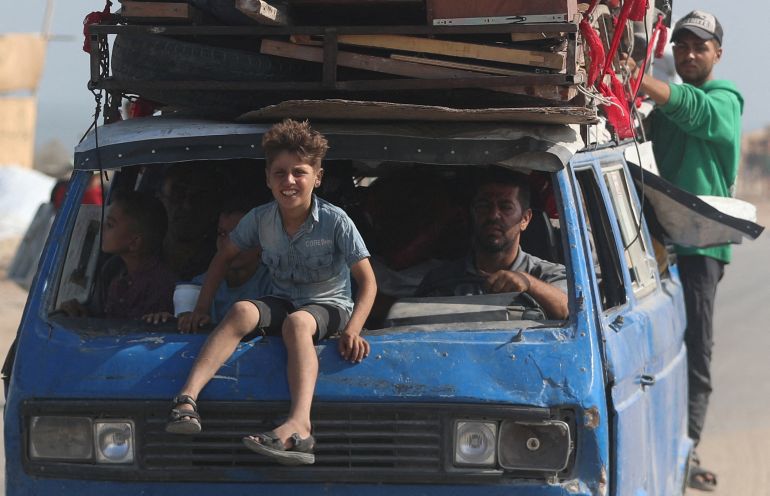United States Secretary of State Marco Rubio has arrived in Israel, where he is set to meet Prime Minister Benjamin Netanyahu as tensions mount in the Middle East over the unprecedented Israeli attack on Qatar last week, with an emergency session of the Arab-Islamic summit set for Monday in Doha, and as Israel presses ahead with its destruction of Gaza.
Rubio’s trip, which began on Sunday, comes after US President Donald Trump criticised Israel over the brazen and failed attack on Hamas leaders in the Qatari capital.
Recommended Stories
list of 3 itemsend of list
Before departing for Israel, Rubio told reporters that while Trump was “not happy” about the strike, it was “not going to change the nature of our relationship with the Israelis”.
But he added that the US and Israel would discuss its impact on efforts for a truce in Israel’s war on Gaza.
“The president wants this to be finished with. And finished with meaning 48 hostages released all at once. Hamas is no longer a threat, so we can move on to the next phase, which is, how do you rebuild Gaza?” he said.
“How do you provide security? How do you make sure Hamas never comes back again? That’s the president’s priority… And part of what we’re going to have to discuss as part of this visit is how the events of last week with Qatar impact that.”
Rubio said it had yet to be determined who would do that, who would pay for it and who would be in charge of the process.
In a post on X on Saturday, Rubio said his focus in Israel would be “on securing the return of hostages, finding ways to make sure humanitarian aid reaches civilians, and addressing the threat posed by Hamas”.
Speaking from the Jordanian capital Amman, Al Jazeera’s Hamdah Salhut said Rubio would also be engaged in “damage control”, following international condemnation of Israel’s strikes in Qatar.
Salhut noted that the allies’ messaging was not fully aligned. “Netanyahu is still vowing that this perhaps won’t be an isolated incident, despite US promises that it won’t happen again,” she said.
As well as the Doha attack, Salhut said the pair would also have a lot of other topics to discuss, including the Israeli-threatened annexation of the occupied West Bank.
Israel’s attack on Qatar, a major non-NATO ally of the US, targeted Hamas leaders who had gathered to discuss a new ceasefire proposal in the war on Gaza put forth by the US. The leadership survived, but six people were killed, including a Qatari security officer.
US officials described it as a unilateral escalation that did not serve US or Israeli interests.
The strike also led to broad condemnation from other Arab states, and derailed ceasefire and captive talks brokered by Qatar.
Al Jazeera’s Rosiland Jordan, reporting from Washington, DC, noted that the US and Qatar have expressed a commitment to continue the push for peace.
“However, late on Saturday, Netanyahu said on social media that it’s Israel’s view that the Hamas leadership needs to be driven out of Qatar, because in Israel’s view, Hamas is not committed to peace,” she said.
“So there’s going to be certain discussions about the next steps forward, given that Trump has said he wants to see an end to the war in Gaza,” she said.
For its part, Hamas has repeatedly said it was willing to release all of the captives it took from Israel and cede control of Gaza to an interim Palestinian administration, in exchange for an end to the war and a full Israeli withdrawal from the territory.
Netanyahu, meanwhile, has called for the expulsion of Gaza’s population and signed an agreement on Thursday to move ahead with a settlement expansion plan in the occupied West Bank that would make any future Palestinian state virtually impossible.
On Friday, the United Nations General Assembly voted to back a revival of the two-state solution, in open defiance of Israeli opposition.





